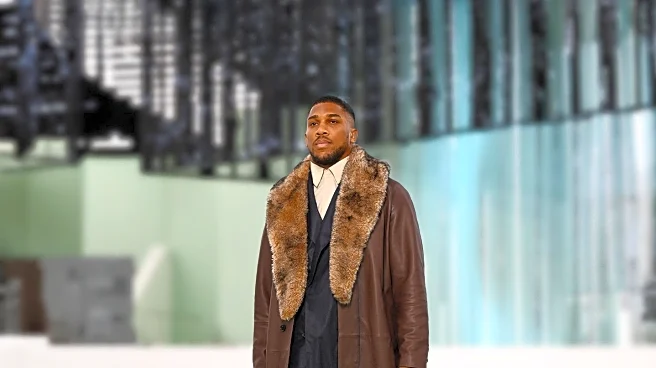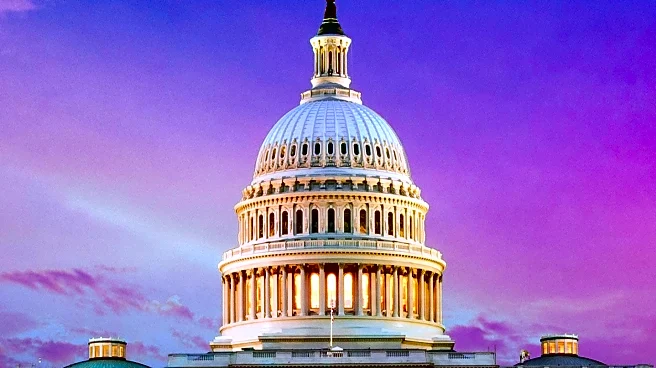What's Happening?
Recent trends in men's fashion have seen a shift towards more revealing clothing, such as waist-skimming shirts and short shorts. This development is highlighted by the New York Times, which reported on the prevalence of shrunken tops at New York Fashion Week. Retailers are also selling shorter shirts, and DIY tutorials on platforms like TikTok are popularizing the trend. This fashion movement is partly driven by a gym-obsessed culture where showcasing one's physique is considered a significant achievement. Stylist Luke Day notes that the current 'flex' is not about designer items but rather one's body, with skimpy shirts and crop tops emphasizing toned stomachs and short shorts highlighting well-developed legs.
Why It's Important?
The shift towards skimpier men's clothing reflects broader societal changes in body image and self-expression. As men become more comfortable with displaying their physiques, this trend could influence the fashion industry to produce more diverse and body-positive clothing options. Additionally, the trend may impact consumer behavior, with increased demand for fitness-related products and services as individuals strive to achieve the body confidence necessary to embrace these styles. This movement also suggests a 'queering' of men's fashion, where men of various orientations are exploring more playful and expressive ways to dress, potentially leading to greater inclusivity and acceptance in fashion.
What's Next?
As this trend continues, fashion brands may further innovate to cater to the demand for revealing clothing, possibly incorporating sustainable practices due to the reduced fabric usage. The fashion industry might also see a rise in collaborations with fitness brands, promoting a lifestyle that combines fashion with physical wellness. Social media platforms will likely play a crucial role in spreading these trends, with influencers and fashion icons driving the conversation around body positivity and self-expression.
Beyond the Headlines
The trend towards skimpier clothing could have deeper implications for societal norms around masculinity and body image. As men embrace more revealing styles, traditional notions of masculinity may evolve, allowing for greater freedom in self-expression. This could lead to a cultural shift where body confidence and fitness are more openly celebrated, challenging stereotypes and encouraging a more inclusive understanding of male fashion.










